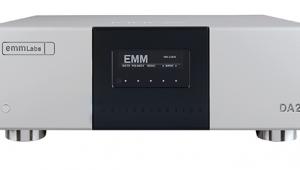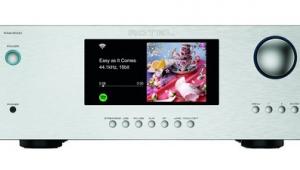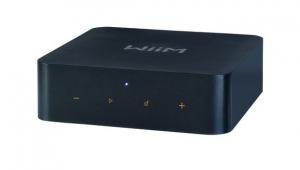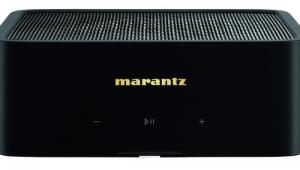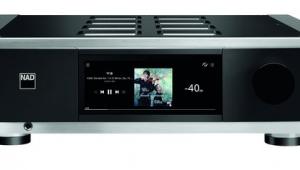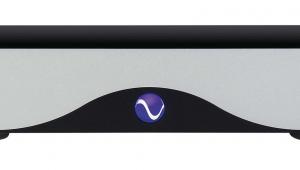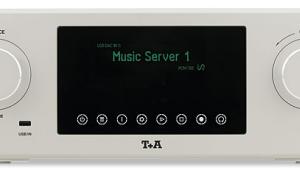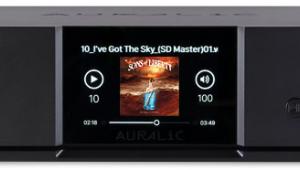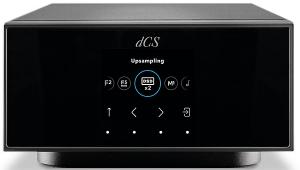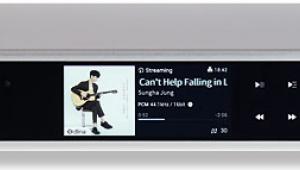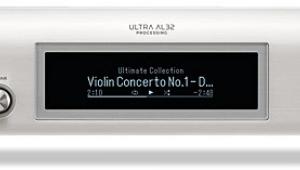Primare Np30 (£2000)

When Primare set out to develop its I32 integrated amplifier a few years ago (and sibling PRE32 preamp) it also designed in an expansion slot for an optional media streaming and DAC board dubbed the MM30.
That optional MM30 ‘media board’ PCB forms the heart of the NP30 network media player/DAC. It’s based around a UPnP/DLNA network streaming module from German supplier Audivo. Playback of music files up to 192kHz/24-bit is supported via wired Ethernet LAN, with gapless playback of segued tracks, along with internet radio using the familiar vTuner platform.
Wi-Fi connectivity is also included, but via WLAN you’re restricted to a maximum resolution of 48kHz/16-bit. The NP30 also functions as a DAC for additional digital sources in a system. It sports four S/PDIF inputs (three Toslink; one RCA), an asynchronous USB-B input, and a further USB-A socket at the rear for playback from a FAT32-formatted memory stick. This socket is also compatible with iDevices.
The NP30 is housed in Primare’s familiar heavyweight steel chassis supported on three isolation feet and with a brushed aluminium fascia, and looks almost identical to its excellent DAC30 [HFN Feb ’13].
Of course, the NP30 is designed primarily to be a streamer – but you might want to push in data directly from a computer. So Primare uses the well-established XMOS microprocessor interface for the NP30’s asynchronous USB input. USB Audio Class 1.0 functionality is a straightforward matter of plug and play with all computers, while USB Audio Class 2.0 is also natively supported for Mac OS X. Drivers need to be downloaded from Primare’s website and installed on PCs running Windows OS.
A fascia button scrolls through the inputs, LEDs confirming the selection. Inputs and volume up/down can also be governed by the new C24 IR system remote (it controls most Primare components).
Primare has developed a free app to control its ‘connected’ components using an iOS or Android device. Any standard UPnP application can be used to browse your media server and play files, but you really need Primare’s app to configure the NP30 and to access features such as input switching, volume, etc.
Clear delineation
Primare’s NP30 sounded every bit as good when streaming as when used as a standalone DAC and we could discern little or no difference in sound between the two methods.
It served up a commendably wide and deep soundstage when playing top quality recordings, while maintaining a clear delineation of instruments and voices. Malcolm Arnold’s joyous A Sussex Overture [Reference Recordings] sounded generously proportioned and convincingly three-dimensional. The NP30’s sonic and musical delivery appeared effortless during the performance’s climactic dynamic swings, with wall-to-wall soundstaging and precise focus. Massed strings were delicately articulated with a pleasing sense of space around the performers and sections of the orchestra.
Moving to something altogether ‘manufactured’, we challenged the NP30 to play the ‘Chicken Farmer Song’ by Swedish prog-rockers The Flower Kings, from Space Revolver [Inside Out Music]. It confirmed our impression of the NP30’s apparent calmness under pressure and showed its ability to dig deeply into densely populated collages.
The multiple layers of guitars, swirling synthesizers and intricately woven vocal tracks were surprisingly well depicted given the ‘thickening’ compression during the song’s more ambitious passages. The pumping rhythm section of Jonas Reingold and Hasse Bruniusson underpinned the whirlwind proceedings well, helping to make sense of what can easily become cacophonous.
Verdict
Overall we found the NP30’s sound to have been skilfully balanced, its gentle softening at the frequency extremes imbuing the NP30 with a touch of ‘golden glow’ that made even low-bitrate internet radio tolerable. When rendering lossless CD-quality (and better) music files Primare’s NP30 proved that a well-implemented network player is more than capable of offering audiophile-quality replay.
Originally published in the 2014 Yearbook


